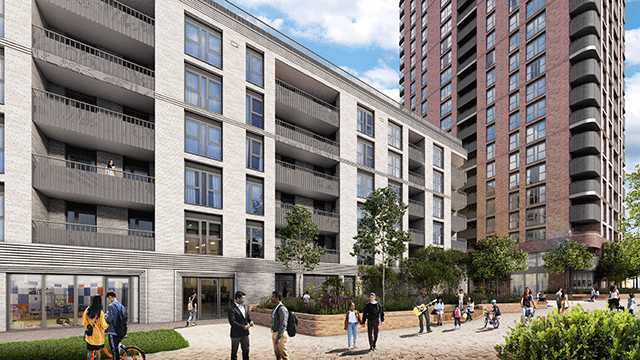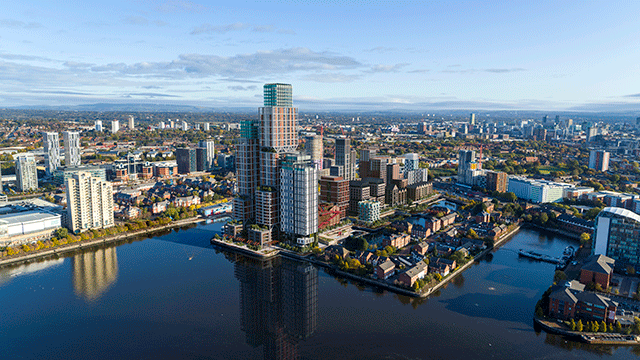
Let’s start with the good news. “A lot of opportunities in London’s zones 1 and 2 are coming back into play for student owner-operators and we haven’t seen that for a while,” says James Hanmer, director of student investment and development at Savills, who reckons that a cooling residential market has opened up new possibilities for student housing in the capital.
Unite chief executive Richard Simpson agrees. Although the operator opened a 700-bed building close to Wembley Stadium in September, it stopped acquiring in London four years ago because it felt prices were too steamy. Now the search is back on, not least because joint-venture partner GIC still has £100m to invest in London’s student housing market. “A continual deterioration in land prices will make development viable again in London,” says Simpson.
For other operators, such as Urbanest, which works exclusively with a limited number of top-rung universities, a changing marketplace means reconsidering the large-scale provision of studio flats, even if that means smaller rooms. “Students understand the trade-off between smaller room sizes and a good location,” says Urbanest chief executive Mark Morgan. When the operator opened a new building in Westminster Bridge Road, SE1, last year it included some double rooms that could be split for privacy by sliding screens. That enabled it to offer rents of £180 per week, significantly less than the £230 per week average for purpose-built student housing in London.
But the future is not quite as rosy as it may appear. Research by Savills shows that while around 5,000 new beds were completed in the capital this year and last, just a few hundred are under construction for completion in 2017 onwards. Brexit may not be helping, and planning factors such as end-user affordability and the Community Infrastructure Levy certainly aren’t, says JLL student housing director Richard Taylerson. “CIL rates are averaging £10,000 per student bed, which is killing off competitiveness with residential development.” On the other hand, he notes, a limited supply of student accommodation is pushing capital values up, with the average student bed now valued at more than £200,000.
In the future, savvy London operators will create vibrant student communities, integrated into the urban fabric, that positively engage with the local community, says Maria Nesdale, senior associate at architect Gensler. “That’s all down to creating the right mix of uses and understanding both the users and the local context,” she says. “It must go beyond simply providing a number of rooms to meet demand.”
The small matter of Brexit
Operators of student accommodation are downplaying the potential effect of June’s EU referendum result. Unite reckons that only around 900 of its 10,000 beds in London are occupied by students from mainland European countries, and Urbanest similarly says it typically houses only a handful of EU nationalities in the capital. “It seems unlikely that stricter visa requirements and higher fees for EU students post-Brexit will have a significant impact on the overall demand for purpose-built student accommodation,” says Paul Leamy, partner at legal firm Taylor Wessing.
However, Roger Lown, head of student housing at Bilfinger GVA, counters: “The market will see the effects of Theresa May’s calls to restrict visas for all overseas students, causing universities to reassess their finance models.”
Currently, overseas students make up one-third of London’s total student population, so Lown suggests that May’s reforms will hit the capital the hardest.
Any impact will therefore be felt by student housing operators, says Mark Chester, partner at law firm Gowling WLG. “For those providers whose accommodation comes with a premium price tag that only international students can typically afford, the possibility of them having to drop their rates therefore becomes a reality,” he says. “Significantly, this could force them to move into the mainstream student accommodation market and compete directly with the likes of Unite and UPP.”
Could the PRS help feed a supply-starved student market?
If the supply of purpose-built student accommodation is unlikely to meet total demand in the near future, could an alternative product ride in to the rescue? Bob Robinson, director at planning consultancy DPP, thinks so. He suggests the PRS could play an important role in soaking up students who want accommodation in the capital and thinks that the recent rise in overseas students will further bolster demand in this sector. “The very nature of student accommodation is morphing into the PRS model. Halls of residence, which are essentially cluster flats (rooms coming off a communal living space) are not appealing to overseas students. They prefer self-contained, bedsit-style properties, which is the way PRS schemes are going,” he says.
Robinson believes that current permitted development rights legislation is a win-win situation for developers and students, as it allows the former to construct to a higher density than might be the case with new-builds, while increasing total availability of suitable accommodation for the latter.
He adds: “In London, PRS could become a significant part of the market, especially if owners let these properties on short-term leases, on an easy-in, easy-out basis.”
Capital value
- UK market (university halls of residence and private sector) – £42bn
- London market (university halls of residence and private sector) – £14bn
- London market (university halls of residence only) – £5.1bn
- London market (private sector only) – £8.9bn
Rent
- London average university en suite – £183.24 per week (4.5% annual increase)
- London average private sector en suite – £249 per week (7.8% annual increase)










